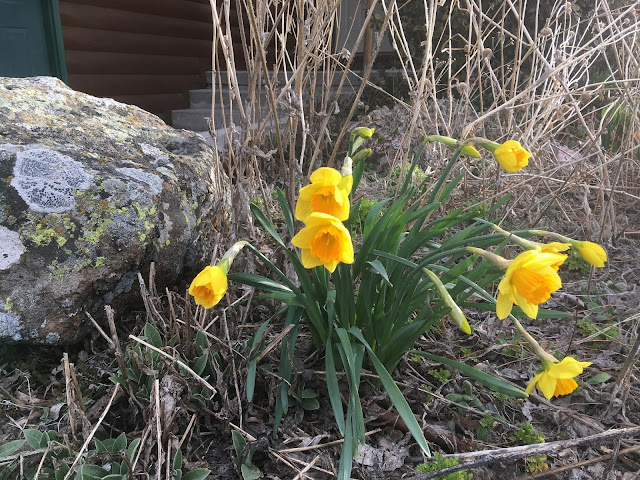We finished our third day of branding yesterday. Thank goodness for good friends that want to come help. Now it can blow and rain for a few days. We recently added new livestock to the ranch – honeybees. A local producer parks his hives on our property every year in early spring. They love the willows and box elder trees that live on our ranch. The box elder, a short lived maple regarded as a nuisance to many, is full of drooping blossoms so the tree canopy over the dog houses is alive with buzzing. Box elder wood is weak and the tree harbors the rust colored bugs that gather every fall to launch an effort to come inside our homes. But hearing and seeing how the bees use the trees, I have a new appreciation for them. Our bees, whether farmed or wild, need food as they emerge from hibernation and we’re happy to oblige. We’ve been burning piles of Russian olive trees that we cut last year. The tree is invasive and covered in thorns. My arms are scratched from handling them. We have finally learned that you cannot cut down an olive without applying an herbicide to the trunk to kill it. It can be done very strategically just inside the bark around the cambium layer. As it says on a youtube video put out by the extension service, “cutting the trunk just makes them mad,” because they re-sprout in a thorny fanfare of growth that makes it nearly impossible to get close to them. Lesson learned. We also use fire to burn old growth and tumble weeds out of our irrigation ditches to get ready for water. We’re careful to burn only what’s necessary because we know the value of plant life, old and new, to stabilize banks and provide cover for wildlife. Still in some places fire is impossible to control entirely and it travels out of the ditch bank. The other evening at dusk, we noticed a dead tree smoking behind us and knew that it was burning inside. I went home and got the chain saw and a weed sprayer filled with water. Mark cut down the tree and wet it thoroughly so we could sleep that night. In the midst of all this, the herd is still calving and Mark is still watching for sick calves. We had another set of twins that needed to be brought in to bond as a threesome. We laid the babies on the 4-wheeler rack and coaxed the mama to follow them in to the barn on an especially cold and windy morning. At the end of each day I get tired and discouraged because of all the work to do on a ranch in the spring. Then by the next morning I’m ready to go again. There’s a yellow sticky note on my bulletin board that reads: “Oh, crap, she’s up.” It’s supposedly what the devil says when good women arise each day to do battle. Good to keep in mind. |
 |
| ours is a burning affair |
 |
| olive control |
 |
| one twin under a blanket to keep him from getting up |
 |
| one twin needs colostrum supplementation |



